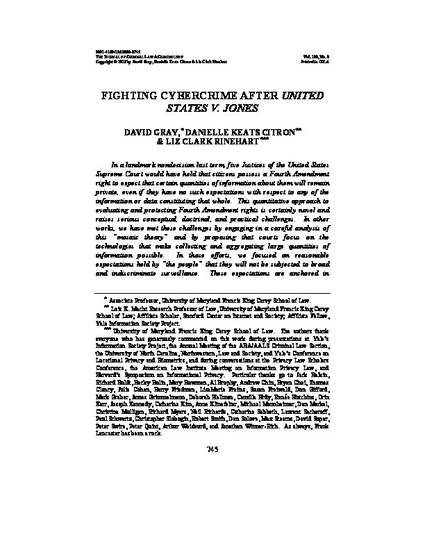
- Fourth Amendment,
- privacy,
- United States v. Jones
In a landmark non-decision last term, five Justices of the United States Supreme Court would have held that citizens possess a Fourth Amendment right to expect that certain quantities of information about them will remain private, even if they have no such expectations with respect to any of the information or data constituting that whole. This quantitative approach to evaluating and protecting Fourth Amendment rights is certainly novel and raises serious conceptual, doctrinal, and practical challenges. In other works, we have met these challenges by engaging in a careful analysis of this “mosaic theory” and by proposing that courts focus on the technologies that make collecting and aggregating large quantities of information possible. In those efforts, we focused on reasonable expectations held by “the people” that they will not be subjected to broad and indiscriminate surveillance. These expectations are anchored in Founding-era concerns about the capacity for unfettered search powers to promote an authoritarian surveillance state. Although we also readily acknowledged that there are legitimate and competing governmental and law enforcement interests at stake in the deployment and use of surveillance technologies that implicate reasonable interests in quantitative privacy, we did little more. In this Article, we begin to address that omission by focusing on the legitimate governmental and law enforcement interests at stake in preventing, detecting, and prosecuting cyber-harassment and healthcare fraud.
